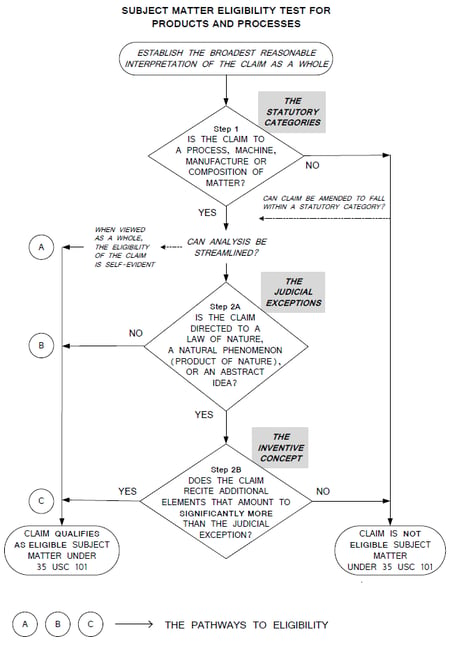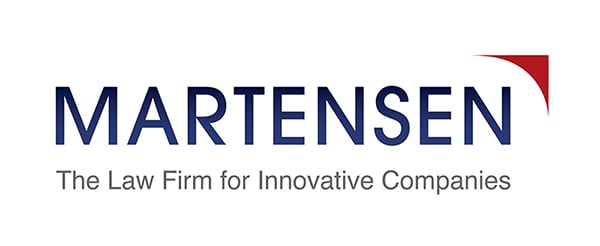Is Your Software Invention Patentable?
Businesses based on software innovation invest significant resources to develop new and useful applications, but are the intellectual property (IP) foundations of such businesses patentable? The U.S. Supreme Court has waged a sustained campaign to narrow what software innovations are appropriate subject matter for patent protection and have constructed an elaborate test to identify true software innovation. Knowing the basics of that test is crucial for businesses seeking protection for their software intellectual property.
What is the Supreme Court so Worried About?
When software innovation took off in the 1980s and 1990s, inventors began to seek protection for their innovations that allowed many formerly manual processes to be automated and streamlined. In the mid-1990s, patents became the preferred way to protect software innovation, and businesses began to seek exceedingly broad software patents that threatened to monopolize well-known activities, as long as they were implemented through software. In response, the Supreme Court began to carve back the scope of such patents.
Patentable Subject Matter Limitations: the Alice Test
 The tool used by the Court to reign in software patents was the Patent Act’s subject matter eligibility requirements. While patents can protect novel methods or processes, including those implemented by software, as well as machines that are a combination of software running on computer hardware, certain categories of innovation are excluded. These are the following:
The tool used by the Court to reign in software patents was the Patent Act’s subject matter eligibility requirements. While patents can protect novel methods or processes, including those implemented by software, as well as machines that are a combination of software running on computer hardware, certain categories of innovation are excluded. These are the following:
- Abstract Ideas: Patents are not granted for abstract ideas or concepts without a tangible and practical application. The mere formulation of an idea, detached from a specific implementation, is ineligible.
- Natural Phenomena: Discoveries of natural phenomena, scientific principles, and laws of nature are not patentable. While applications of these discoveries may be eligible, the underlying natural occurrence itself is not.
- Laws of Nature: Like natural phenomena, laws of nature and mathematical algorithms are not patentable.
Over the course of several decisions, including Alice Corp. Pty. Ltd. v. CLS Bank International, 134 S. Ct. 2347 (2014) and Bilski v. Kappos, 561 U.S. 593, 604 (2009), the Court developed a subject matter eligibility test for software patents to ensure that patents were not attempting to lay claim to an abstract idea, a natural phenomenon, or a law of nature. It is not straightforward. Here’s a handy flowchart outlining the analysis.
The Bar is High
Despite widespread criticism of the “Alice Test” as impractical and inconsistent, this is the law, and software innovators must successfully navigate it if they want patent protection for their software. Practically, the test means two things:
- The bar is high for securing patent protection for software
- Software innovators must show an Inventive Concept
The Inventive Concept requirement means the software patent must include additional elements that amount to “significantly more” than an abstract idea, law of nature, or natural phenomenon. While it is not easy to know definitively whether your software innovation includes an inventive concept, there are a few practical guidelines you can use to determine if you are on the right track.
Avoid the Well-Understood, Routine, or Conventional
Software patents that seek protection for performing well-understood, routine, and conventional activities on a generic computer are not likely to be successful. The innovation must transcend routine and conventional activities, offering a unique and non-obvious application. Your software needs inventive concepts that go beyond basic computer implementations, ensuring that patents drive meaningful progress.
Avoid Abstract Idea + Internet
Similarly, the intersection of an abstract idea, law of nature, or natural phenomenon with the Internet, generic computer, or mobile device are not likely to be successful. Your new app may be a great business idea and may have required a significant amount of work, but it may not be patent eligible. If your software falls into this category, other IP protection such as copyright, trade secret, or design patents may be more appropriate.
Avoid Preemption
Preempting the use of an idea for all purposes is a red flag in patent applications. The patent system aims to strike a balance between protecting inventors' rights and encouraging participation in a competitive and innovative landscape. Therefore, software innovators should carefully align the scope of their claims to match their core innovation, even if this means seeking narrower claims where appropriate.
Is your Software itself Novel?
If your software employs novel structures, procedures, or modules that represent a substantial improvement over existing programming methods, your software may have inherent novelty. Again, the bar here is high, and most software innovations involve routine or known programming techniques that are implemented to perform some new task. While the programming required to perform the new task may have required considerable work and ingenuity, unless it breaks new ground, it is likely ineligible.
Does your Software Improve Computer Operation?
While software running on a generic computer is usually not subject matter eligible, it can be if it improves computer operation. For example, software that improves file compression speed for a given processor resource improves the computer’s performance.
Can your Software Pass the Machine or Transformation Test?
The machine or transformation test is a practical tool for evaluating whether your software process is likely eligible for patent protection. This test requires that the process be tied to a particular machine or involve the transformation of an article into a different state or thing. By meeting this criterion, innovators can enhance the likelihood of obtaining patent protection.
- Machine: The combination of software with specialized hardware is generally going to pass the Alice test for subject matter eligibility. Software that runs on a custom computer, a device that includes processing capacity, or if your generic computer can be included in a broader system of hardware components have potentially patentable software.
- Transformation: Software that is used to perform a transformation of a natural phenomenon is also likely subject-matter eligible. Examples of transformation include using radio signals to send messages or translating seismic vibrations into an earthquake warning system.
Staying on top of legal developments and understanding subject matter eligibility is crucial. As innovators continue to push the boundaries of what is possible, the protection of intellectual property remains a cornerstone of fostering progress and competition. By navigating the intricacies of patent law and focusing on inventive concepts, businesses and individuals can ensure that their groundbreaking ideas are shielded from unauthorized use, paving the way for a future of continued innovation.
Contact our team of patent experts to help guide you through the process of protecting your intellectual property.



